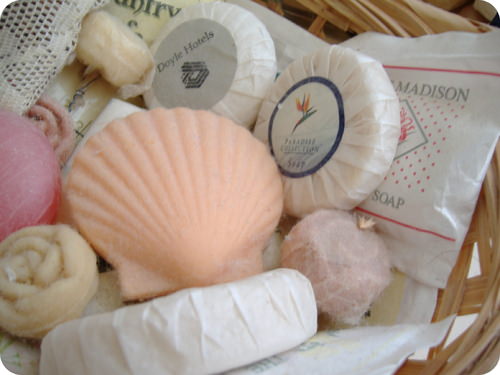READ: Titration Calculations
READ: Titration Calculations
How is soap made?
The manufacture of soap requires a number of chemistry techniques. One necessary piece of information is the saponification number. This is the amount of base needed to hydrolyze a certain amount of fat to produce the free fatty acids that are an essential part of the final product. The fat is heated with a known amount of base (usually NaOH or KOH). After hydrolysis is complete, the left-over base is titrated to determine how much was needed to hydrolyze the fat sample.
Titration Calculations
At the equivalence point in a neutralization, the moles of acid are equal to the moles of base.
Recall that the molarity
We can then set the moles of acid equal to the moles of base.
Suppose that a titration is performed and 20.70 mL of 0.500 M NaOH is required to reach the end point when titrated against 15.00 mL of HCl of unknown concentration. The above equation can be used to solve for the molarity of the acid.
The higher molarity of the acid compared to the base in this case means that a smaller volume of the acid is required to reach the equivalence point.
The above equation works only for neutralizations in which there is a 1:1 ratio between the acid and the base. The sample problem below demonstrates the technique to solve a titration problem for a titration of sulfuric acid with sodium hydroxide.
Sample Problem: Titration
In a titration of sulfuric acid against sodium hydroxide, 32.20 mL of 0.250 M NaOH is required to neutralize 26.60 mL of H2SO4. Calculate the molarity of the sulfuric acid.
Step 1: List the known values and plan the problem.
Known
- molarity NaOH = 0.250 M
- volume NaOH = 32.20 mL
- volume H2SO4 = 26.60 mL
Unkonwn
- molarity H2SO4 = ?
First determine the moles of NaOH in the reaction. From the mole ratio, calculate the moles of H2SO4 that reacted. Finally, divide the moles H2SO4 by its volume to get the molarity.
Step 2: Solve.
Step 3: Think about your result.
The volume of H2SO4 required is smaller than the volume of NaOH because of the two hydrogen ions contributed by each molecule.
Summary
- The process of calculating concentration from titration data is described and illustrated.
